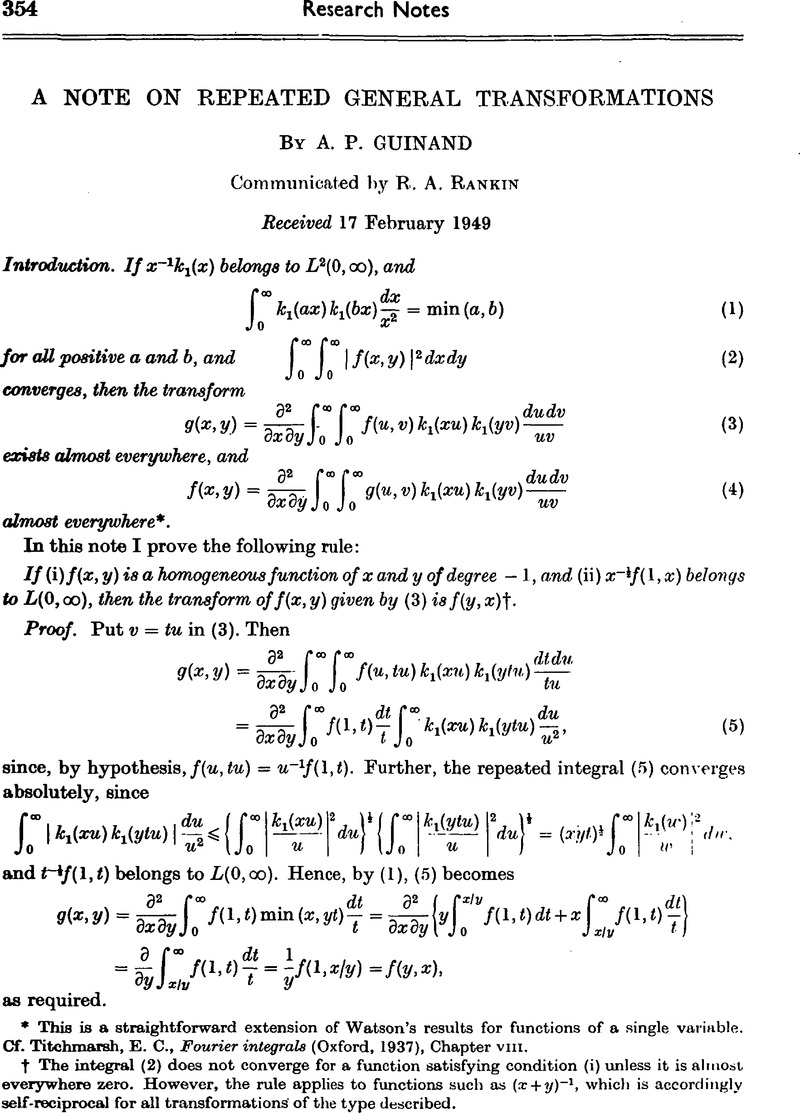No CrossRef data available.
Published online by Cambridge University Press: 24 October 2008

* This is a straightforward extension of Watson's results for functions of a single variable. Cf. Titchmarsh, E. C., Fourier integrals (Oxford, 1937)Google Scholar, Chapter viii.
† The integral (2) does not converge for a function satisfying condition (i) unless it is almost everywhere zero. However, the rule applies to functions such as (x + y)−1, which is accordingly self-reciprocal for all transformations of the type described.